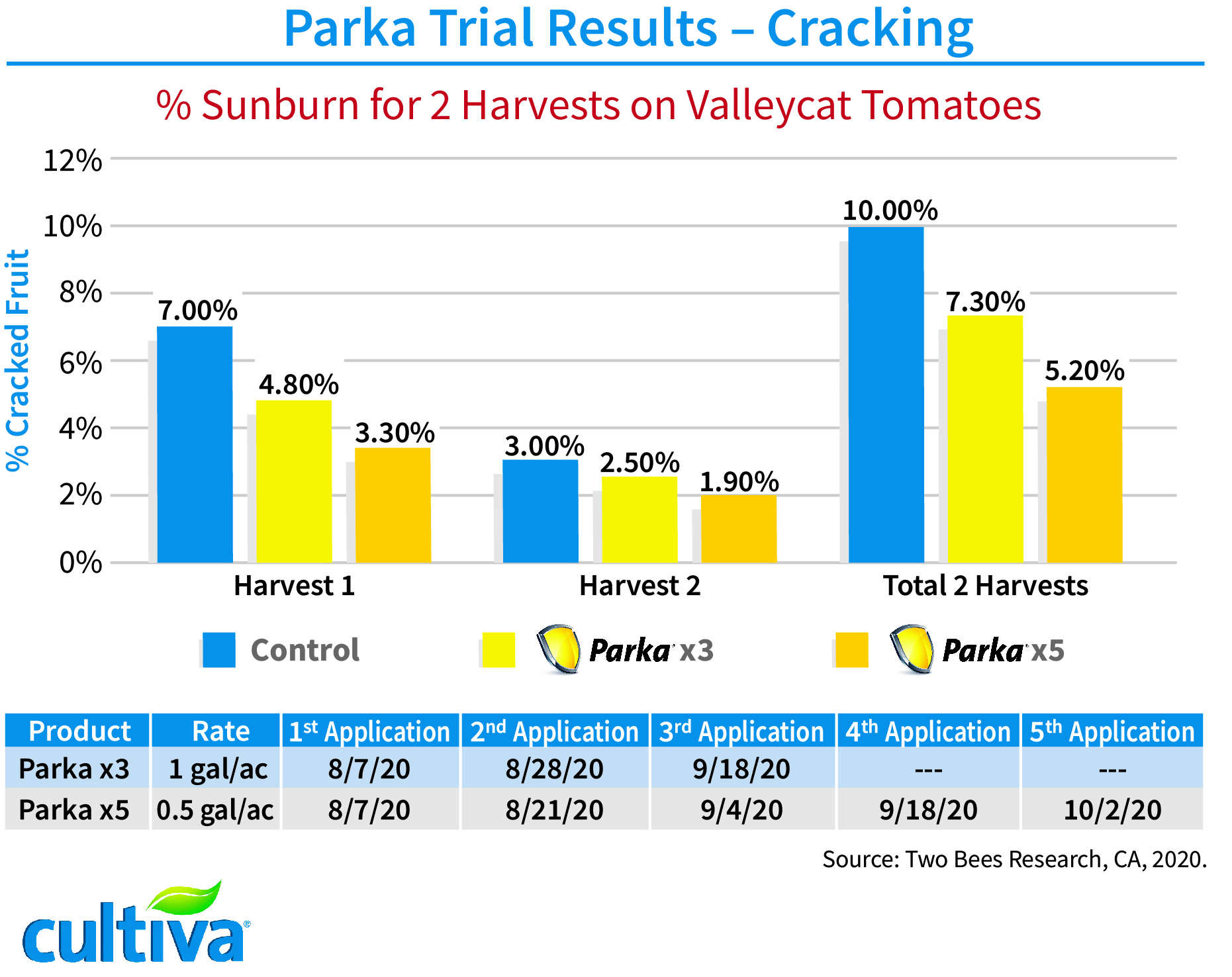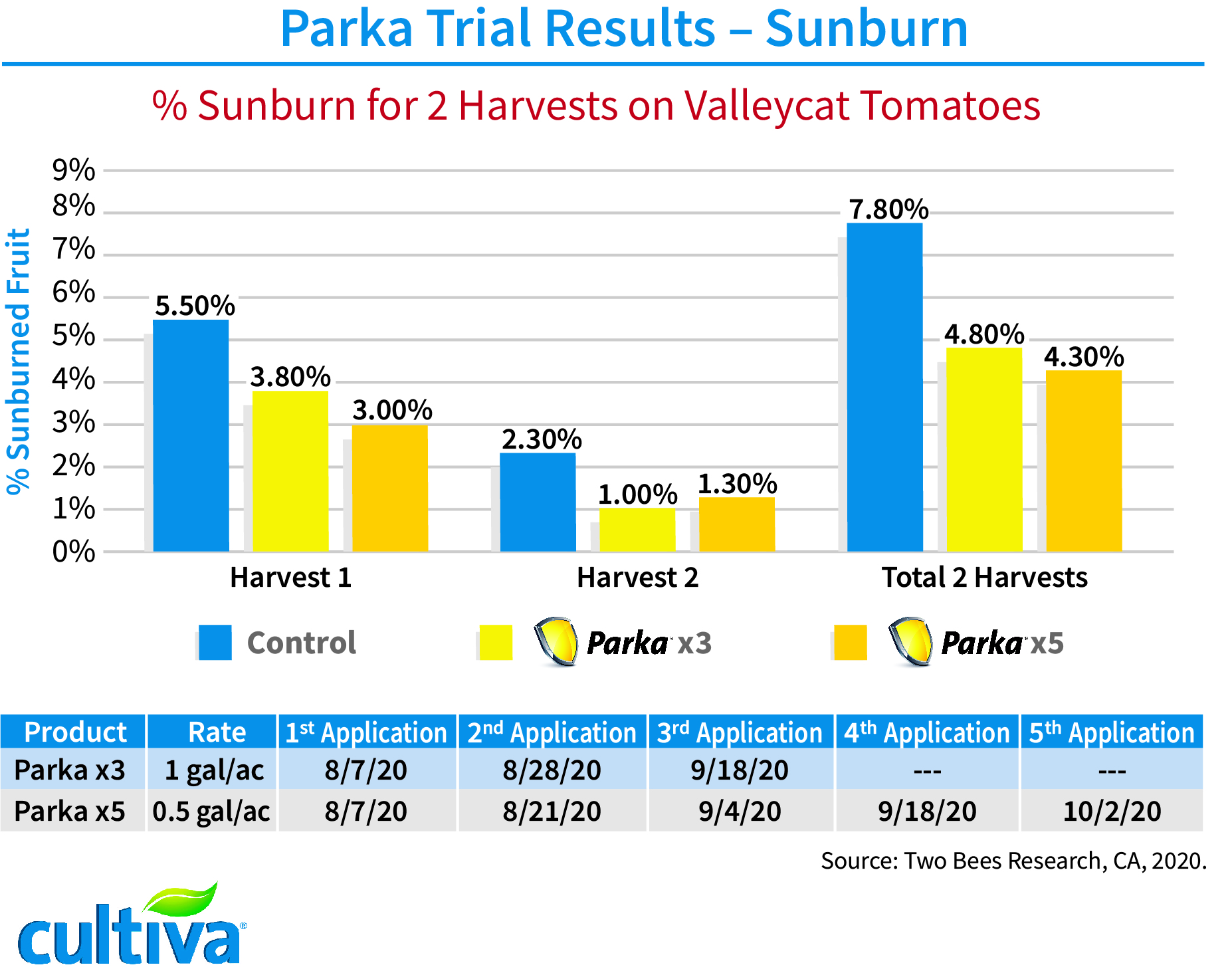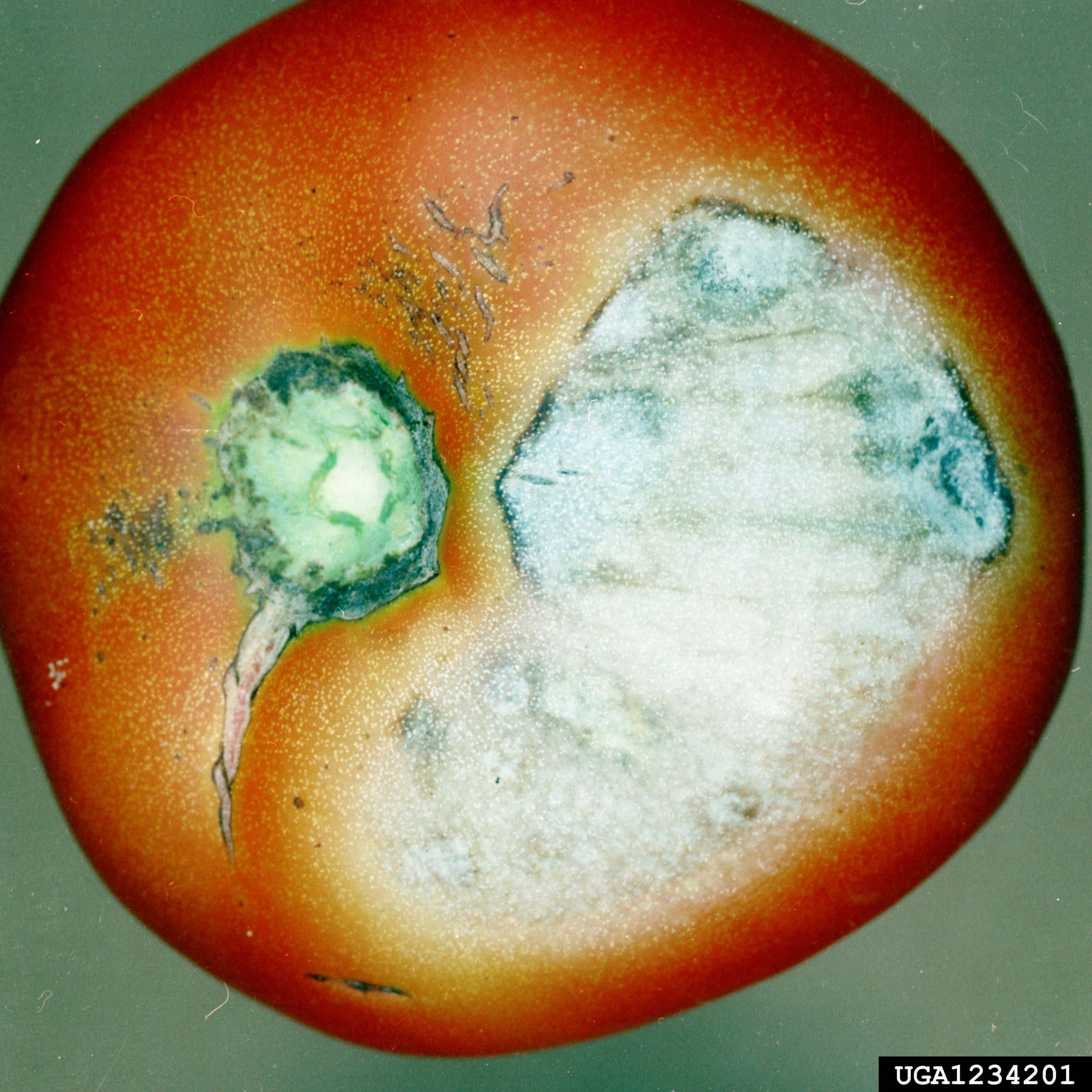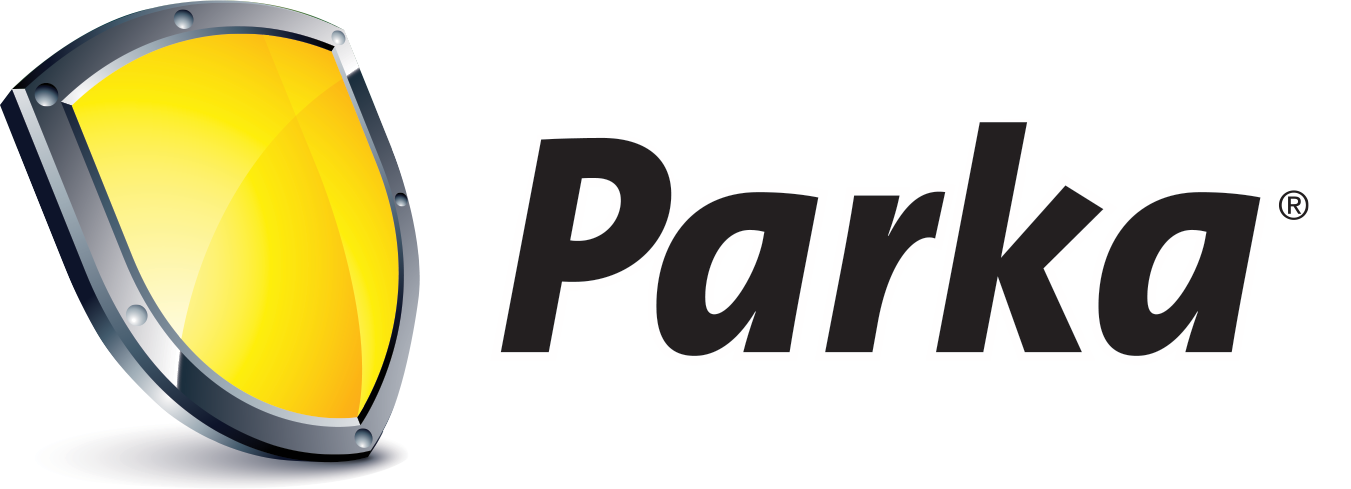Supplementing the Cuticle Means Less Cracking
Sunburn and splitting in tomato crops are the cause of significant yield loss for growers. Because Parka supplements and stabilizes the cuticle of the fruit, it is less susceptible to cracking. Parka provides the physical protection of a clear, hydrophobic and elastic lipid bi–layer that reduces the amount of water entering the ripening tomatoes during a rain event. This layer also reduces water loss from within the fruit during periods of high temperatures. Parka reduces sunburn incidence and increases stress tolerance by enhancing the plant’s antioxidant capacity and the amount of chlorophyll and pheophytin—both essential tools the plant needs to manage light energy during photosynthesis. When conditions arise that would normally cause sunburn damage, the excess light energy can be used for growth, rather than damaging the photosynthetically active tissue.

Why use Parka on Tomatoes?
- Provides protection from sunburn on fruit.
- Reduces the amount of splitting on ripening tomatoes.
- Easily tank mixed with foliar nutritionals and pesticides.
- Does not leave residue on the fruit.
- Exempt from maximum residue levels.
- Zero preharvest interval, zero worker reentry interval.
How to Use Parka in a Program
Parka should be applied 15 days after first bloom and then at 14-to-21-day intervals through harvest. This protocol is effective on both cracking and sunburn. Application at these regular intervals maximizes fruit integrity. Additional applications are suggested in the presence of high heat and prior to rainfall events. Parka can be tank mixed with most foliar nutritionals and pesticides.
FAQ
What Causes Splitting of Tomatoes?
Splitting of tomatoes is a physiological response when the interior of the tomato absorbs water faster than the outer cuticle can expand. It often happens after a rain event – even more so if the rain follows a dry period. Water absorption by the fruit externally and from the roots, along with the duration of time the water remains on the fruit and the water temperature can all influence the amount of cracking that may occur.
How Does Parka Reduce Splitting?
Research shows that Parka can reduce splitting by up to 48% overall. Parka significantly reduces cracking in many fruit crops, including tomatoes, by filling in microfractures in the cuticle that develop as the fruit grows. Parka supplements the cuticle itself and adds elasticity to it, as well as repelling moisture from the fruit surface and increasing cell membrane stability.

What Causes Sunburn in Tomatoes?
Sunburn is caused by excess solar radiation and heat. Too much light energy can overwhelm the light absorption capacity of fruit by exceeding its photosynthetic ability. Heat exacerbates the problem, and in some cases is the sole cause of it.
How Does Parka Reduce Sunburn Damage?
Parka can reduce sunburn by up to 44% overall. Chlorophyll captures the energy from the sun in the first phase of photosynthesis (the PSII complex) which is used to split a water molecule. The “excited” electron released from this splitting is received by a molecule called pheophytin and is used in the rest of the photosynthetic process. Both chlorophyll and pheophytin are necessary tools plant cells need to deal with energy from the sun. Parka-treated plants have been shown to contain higher concentration of both components in leaves and fruits, which means the cells have a better capability to use the excess light energy for photosynthesis instead of allowing it to cause photo-oxidative damage.
What Do Growers Like About Parka?
Growers like Parka because it works. It is grower-friendly in other significant ways, as well, particularly its flexibility in tank mixing. Parka can be tank mixed with a wide variety of foliar inputs, including both fertilizers and pesticides, saving the fuel and labor costs of making an additional pass in the field. Parka does not leave a residue on the skin of the tomatoes, which field workers and packers appreciate. There is no pre-harvest interval or worker reentry interval with harvest, and it is exempt from maximum residue levels.

Photo credit for Tomato sunscald: Clemson University – USDA Cooperative Extension Slide Series , Bugwood.org


